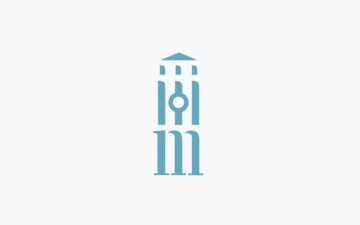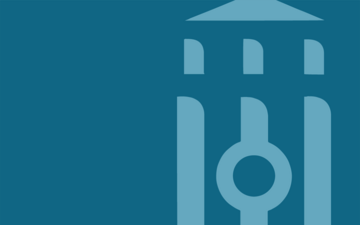Q&A with Kazim Ali, author of Orange Alert: essays on poetry, art, and the architecture of silence

Whether he is discussing the way cell phones have altered physical intimacy and introduced new verb forms, or the way Emily Dickinson's mysteries are more clearly revealed in French translation, Kazim Ali is at once clear and complex, rigorous and charming, accessible and demanding.
In Orange Alert, Ali discusses contemporary poetry in relation to other art forms and to contemporary television, film, and electronic media, including the Internet, YouTube, and Facebook.
He shines a light on the intersections between cultures in these essays on the craft of poetry, offering a hand to poets either geographically or metaphorically outside the mainstream of Western culture.
Kazim Ali is the author of two books of poetry, The Far Mosque and The Fortieth Day; two novels, Quinn's Passage and The Disappearance of Seth; and a memoir, Bright Felon: Autobiography and Cities. He is Assistant Professor of Creative Writing at Oberlin College. He has been a regular columnist for American Poetry Review.
The University of Michigan Press: Reading "Write Something on My Wall," I'm struck by how inward-looking, or interior, Emily Dickinson and Battlestar Galactica's Starbuck are. If Emily had had a Facebook page, how would her work have changed? Could she and Starbuck (either gender's version) ever Friend each other?
Kazim Ali: Emily had a Facebook page or a version of it: she was sending poems to her sister-in-law Susan constantly, sometimes the same day they were written. She frequently incorporated Susan’s suggestions into the next versions. She reached out all the time. You could tell, reading the letters, that she was upset by Higginson’s response to her poems and her comment to him that publication was further from her thoughts than “firmament to fin” was a put-on to hide her feelings. Her work was created in community and in dialog with others. As she matured as a writer she started to figure out that no one else (except Susan, of course) could help her be a better writer and eventually she realized that even Higginson had less to offer her. I think Emily would have loved Facebook—a way to network and be in touch with people without having to leave home!
I am not sure ED would have liked Melville-Starbuck’s passiveness. Certainly she would have appreciated his Christian convictions but ultimately I think Galactica-Starbuck is more her speed—passionate, a little crazy, genderqueer, obsessed with questions of the nature of spirit and existence and the reality of death. Like Emily, Kara Thrace was constantly reinventing herself, unafraid to turn her back on what everyone around her thought, and in the end, just like Emily, she was beyond anyone’s understanding of the nature of character, beyond the grasp of the intellect, finally and completely untouchable.
UMP: Please talk a little about how you incorporate everyday experiences and observations into your work.
KA: Everything is from everyday experiences. I was in Andalusia reading Yannis Ritsos and so I wrote about the architecture of southern Spain and Ritsos’ abiding loneliness. Then, the second morning in Cordoba, coming out of the bathroom I saw on the television news that Mahmoud Darwish had passed away. So immediately the ghost of Darwish came into my essay.
When I was in France reading Beckett in French, I went with my family to Auvers-sur-Oise and the two places, the grave of the young poet, and later handling the soon-to-be-extinct frances with their colorful Cezanne reproduction—all of it made a space in my mind that resonated. It wasn’t until I came home and read Baudrillard and went from him to Paul Virilio and understand more of what I was trying to say.
So with each essay various threads weave together in my mind and lead me somewhere else. And then somewhere else.
UMP: We learn from “Poetry Is Dangerous” about your experience when a box of recycled poetry manuscripts accidentally closes down an institution of higher education, because an authority figure decides you’re a terrorist. If you and the ROTC person in your case had a beer with Obama, what would you collectively talk about? How would you talk with that ROTC person about race and hyper-reaction to recycling?
KA: I wouldn’t want to have a beer, but maybe a cup of coffee? Seriously, though, the problem was not that ROTC cadet. He is responding to a set of social circumstances, the training he has received, and after I published my piece (I heard that) he felt terrible about it. His RA wrote a letter to the president of the university saying that he (the RA) had spent a lot of time with the cadet explaining to him that his actions were justified, that he had done the right thing. I had been trying to convince the president of the university that he should make a statement about what happened, institute some sensitivity training, set something up for me to talk to the ROTC cadets. Well, he wrote back forwarding me the email from the RA saying something along the lines of “well, just you know there is another side of the story.” So I didn’t write to the president again and he didn’t write to me. I later heard through one of my other students who was an ROTC cadet that all the cadets on campus were being required to read my essay. For what purpose exactly I couldn’t be sure, because the commander never responded to my offer to meet with the cadets and talk about what happened.
I would have welcomed the opportunity to meet with them and talk with them. I would talk with them about the culture of fear, the destructive actions of the U. S. armed forces in Iraq, the atrocities committed by the Blackwater Security Agencies, the recently emerging stories of murders of Afghan civilians. I would talk to them about the Islamophobia being indoctrinated into the minds of millions by people like David Horowitz, whose film Obsession: Radical Islam’s War on the West, screened at Shippensburg University the day before this incident. Was the ROTC cadet in attendance at this film? Did he discuss it with his friends afterwards? In any case, people who look like me have always paid the price for the ignorance of people who look (and dress) like him.
You can’t go back. You can’t save the countless innocent civilians who were killed in either New York or Baghdad or Mosul. The war is on—stupidly, brutally, callously, and seeming endlessly, and vigor and passion. The fires of hate are endlessly fanned. Someone like Sarah Palin or Newt Gingrich makes some stupid comment about a “ground zero mosque”—that actual Cordova Institute is neither a mosque, nor is its planned home on Park Street anywhere near Ground Zero—and suddenly Muslims are being beaten and mosques are being burned.
Our only move from this place is through generosity and love. Because war and hate are like fires—they will endlessly feed on themselves, they have no end but the cessation of that which feeds them. Their source is selfishness and greed and fear.
UMP: In one piece ["The Guardian," p 2] you say: "…classical Islamic art eschews representation, and also eschews a sense of the artistic production (book, painting, building) as an object with senses of either linearity or completeness." Could you talk a little about whether or how this tension informs your work? What are ways that creative Muslims work with these traditions?
KA: I am always writing several projects at once, and ideas and sometimes even sentences travel from one book to another. I write poems, fictions, essays, and sometimes texts that travel between these genres fluidly. I wrote a novel called The Disappearance of Seth, which among other things meditates on history and architecture. One editor thought the discussion of monuments and architecture that ran through the book so interesting she wanted it recast as a non-fiction book. My book Bright Felon has been called poetry, essays, and memoir. Which is it? Sometimes “all of the above” and “none of the above” are both the desired answer.
In a sense the shape of a book could be governed not by theme, concept, or genre but by chronology—all the writing written in a certain period—or geography—all the work written in a particular place. In any case, the mind leaps where it will and rules are usually not useful in the construction of creative edifices.
What remains primal for me, at the core of any poem, novel, essay, or memoir is the sentence and the line, the sound of language against silence, the way an individual works in the context of the eternal entropic motion of creation. It is something I learned from Jane Cooper, from Darwish, from Ritsos and Lucille Clifton and Agha Shahid Ali, from Cristina Peri Rossi and Marilyn Buck and Yoko Ono—all the poets and thinkers I engaged in these essays and every day there are more thoughts.
One cannot stop thinking or breathing; each are involuntary reflexes guided not by human intention but by that “ruah” or “spirit”—words that in Arabic and Latin mean both “breath” and “soul.”
To read more about Orange Alert: essays on poetry, art, and the architecture of silence by Kazim Ali, visit the University of Michigan Press website at: /isbn/9780472051274
For more podcasts from the University of Michigan Press, visit our podcast page at: http://www.press.umich.edu/podcasts/index.jsp



